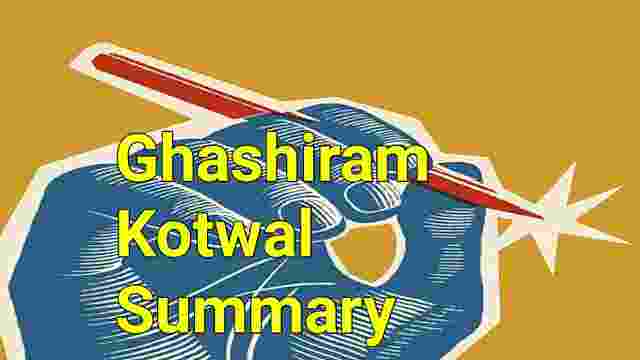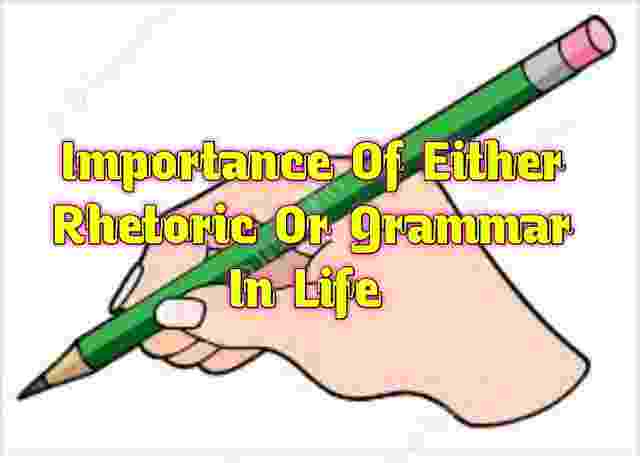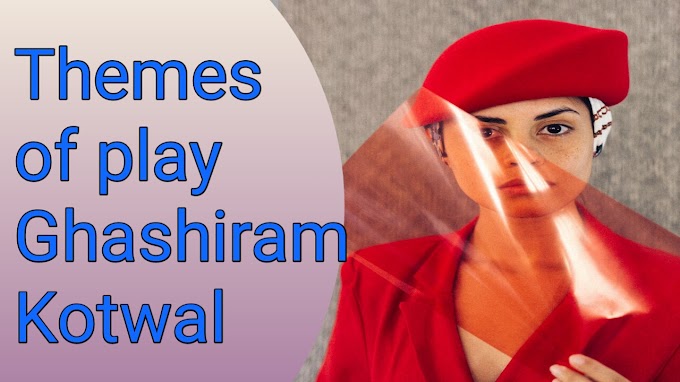Dramatic Techniques Used By Tendulkar In Ghashiram Kotwal :
---The dramatic techniques used by Tendulkar in Ghashiram Kotwal are music and dance and the use of folk forms. These techniques are described as follows: Music and Dance Folk theatre makes use of song, dance and music.
No other major playwright before Tendulkar had made such extensive and innovative use of folk theatre.
In addition to the songs and music, Dr. Jabbar Patel also madeuse of humming so that we have what Vasantrao Deshpande, a classical singer and composer himself calls 'the first sangeet natak in the real sense of the term'.
Ghashiram Kotwal begins with a devotional song and Ganpati, Saraswati and Lakshmi come in dancing. This immediately establishes a link with Dashavatar (a form of folk theatre) which begins with these three deities.
This opening ritual also has links with classical Sanskrit drama and likewise has a certain function; this is, to arouse the interest of the audience, instill a feeling of seriousness in them and to arrest their attention. Here we do not have music for its own sake. According to Pushpa Bhave,
"The music and dance numbers are not embellishments to the narrative... The changing musical notes express the changing mood'.
In a lecture, the music director of the successful Marathi production Bhaskar Chandavarkar has said that the music in the beginning of the play was used innocuously in the Shri Ganaraya song.
But after the Intermission, when Ghashiram has become the Kotwal, the music for the same song becomes much more revolutionary:
There are some of the functions performed by the use of music, song and dance: 'he use of traditional songs and dances effectively sets the background of the decadence of the Peshwas' Poona of the eighteenth century;B The strategic placement of songs and music help to provide dramatic relief after an unusually tense situation;
Music and dance sometimes serve to reinforce the tense atmosphere, as Satish Alekar assistant director to Dr. Jabbar Patel said, 'After the ordeal by fire the tempo tended to slow down a little.
But with the introduction of the 'Malhari' song, the tense atmosphere created by the sequence was reinforced'. The lavani highlights the sensuous, passionate element but at the same time provides a comment on the social corruption 3B The juxtaposition of the lavani or love song with the abhanga or devotional song serves to bring out the contradiction in social values and norms;
The musical form helps to 'deglamourise' history-history has an element of grandeur, distance, formality, which gets reduced by the introduction of song and dance, visible in the great Nana who struck terror in the hearts of many but is made to look ridiculous in the play. At a deeper level, Ghashiram Kotwal is a serious play, a satire on the hollowness of society. Tendulkar himself admits,
"The criticism has a point. the form had a certain inevitability'.
Are we to agree with Tendulkar? Trust the tale and not the teller, we are often told. And the play has been considered extremely disturbing. In this play, we have seen that laughter can be as much an element of subversion and change as anger.
The grotesque figure of the Nana dancing effeminately demystified the power the represents and thereby shows the hollowness of what he represents so that we are made aware of the fact that the possibility of change exists.
The form and content subvert logical and authoritarian structures. We have seen in the play how folk form with the abusiveness represents irrepressible vitality and freedom, and as we can see in Ghashiram, it very subtly subverts the hierarchy of caste. The Use of Folk Forms The other form of dramatic technique used by Tendulkar is the folk form, which makes the play visually exciting.
Sutradhar and Ghashiram are addressing the audience directly in the play. According to Dr. Jabbar Patel, as Ghashiram speaks directly to the audience, the effect achieved is the opposite of that usually created by Brecht.
The effect of a play is highly variable and different audiences respond to it in different ways. In fact, the same production can have a new effect every time it is staged.
Even Brecht's own productions sometimes failed to create the alienation effect, However, the setting of the play in eighteenth century Poona helps to create a sense of distance. Characters in period costume produce the effect that the people portrayed are removed from us in time and space.
Moreover, Nana depicted in the play is quite different from the revered Nana of history This grotesque dancing character reinforces the fact that the spectator is watching a play rather than witnessing reality.
Tendulkar has used the tolk which is predominantly interactive and ensures active audienee participation. But here the folk form is used in mainstream theatre and the use of songs and dances further creates a sense of distance from the action .
In the beginning, it seems that the personality clash between Nana nd Ghashiram is the main theme. Nana promotes Ghashiram and when his protege becomes a maniacal monster as is evident in the climactic ordeal- hy-fire scene, the Nana decides that the time is ripe for destroying the reation that is now of no more use to him.
But on a more careful reading, we realise it is the social system that throws up such aberrations that is being probed. So while the song, dance and visual configurations of the human wall provide for sheer entertainment, the juxtaposition of dialogue, verse, hymn, love song, dance, narration and mime make us probe beyond surface appearances to understand the subtle and complex social processes that dehumanise individuals.
And unless the system is changed, such a situation will continue. The end of the play with its revelry may project the false illusion that all is now well with the world on one level but or another it is clear that this is a mere facade and the real danger continues to thrive.
So, for such a complex play which operates on many different levels, it may not be suitable to pin down the effect to either 'empathy' or'alienation'. It seems that the play veers between the two. The dominant impact is one of shoek at the violence and cruelty depicted. According to Artaud, "The Theatre of Cruelty has been created in order to restore to the theatre a passionate and convulsive conception of life, and it is in this sense of violent rigour and extreme condensation scenic elements that the cruelty on which it is based must be understood". Such a theatre must create a dynamic language of expressions that willarouse general attention.
This would include the visual language of movements, attitudes, gestures, music, dance and mime. This language of theatre must transgress the usual limits of art and speech so that what results is 'a kind of total creation in which man must reassume his place between dream and event'.
According to Artaud, the subject and themes that will be chosen would correspond to the 'agitation and unrest characteristic of our epoch'. If we look at the play in the light of such observations, we will find that there are certain similarities between what Artaud proposed and what Tendulkar achieved .












0 Comments